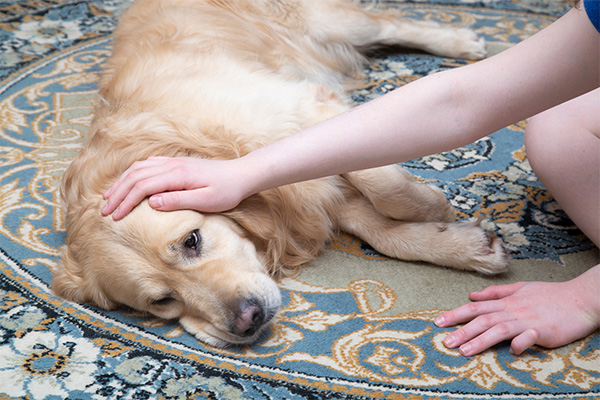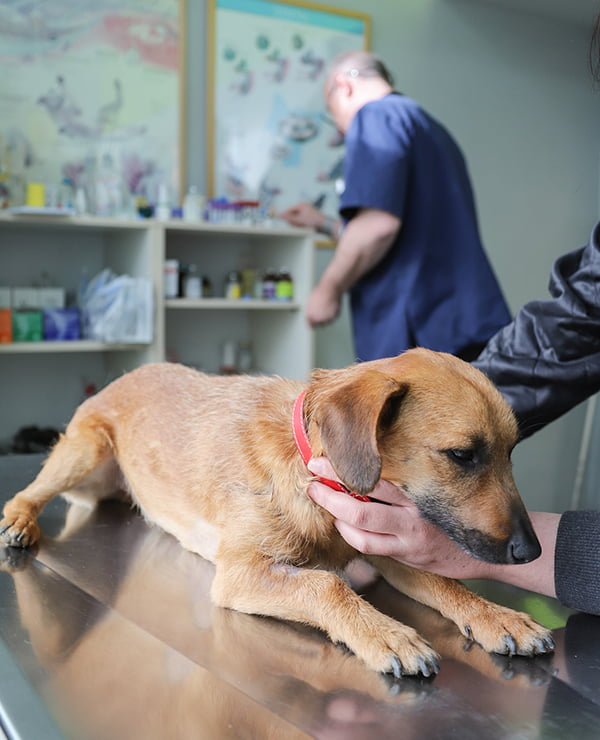Witnessing their furry friend bounding joyfully through the grass is a delightful sight for many pet owners. However, this idyllic scene can take an unexpected turn when your four-legged companion inadvertently steps on a bee. This sudden encounter, though not uncommon during the warmer months, can lead to a painful and sometimes concerning situation for both the dog and the owner.
In this comprehensive guide, we will explore what happens when a dog steps on a bee that every pet owner needs to know. We will share the immediate actions to take and how to recognize the signs that necessitate a trip to the vet.
What Should I Do If My Dog Stepped On A Bee?
Stay Calm
Your canine companion will seek your guidance to respond to various situations. By staying calm, you can prevent their stress levels from escalating. Speak in a soothing voice and move in a controlled manner to reassure your dog that they are safe.
Safely Restrain Your Dog
Use a leash or a gentle hold to keep your dog from moving too much. It is crucial to discourage them from licking or biting the affected area, as such behavior may exacerbate irritation and introduce bacteria to the wound.
Identifying a Bee Sting
Signs your dog may have been stung include sudden limping or favoring one paw, licking or biting at a specific spot on the paw, noticeable swelling or redness in the area, or, in some cases, you may see the bee stinger embedded in the skin.
Immediate Steps After a Sting
First, try to calmly restrain your dog to prevent them from further aggravating the sting area. If you can safely see and reach the stinger, scrape it off. Gently cleanse the affected area with mild soap and cool water, and subsequently, apply a cold compress to alleviate swelling. Monitor your dog closely for any indications of an allergic or severe allergic reaction.
Remove the Stinger Carefully
Inspect the paw closely for the stinger. Use a flat, rigid object to scrape it off the skin's surface gently. Avoid pinching or using tweezers, as this could squeeze more venom out of the stinger and into your dog's paw.
Clean the Area Thoroughly
Gently run cool water over the paw and use a mild, pet-safe soap to cleanse the area. This will help remove any contaminants and soothe the sting site. Afterward, pat the area dry with a clean towel. If the sting site is not cleaned properly, or if your dog excessively licks or chews at it, there's a risk of introducing bacteria and causing an infection. Maintain the cleanliness of the area and discourage your dog from interfering with it.
Apply a Cold Compress
Applying a cold compress can effectively reduce swelling and offer pain relief. You can use a bag of frozen vegetables wrapped in a towel or a cold gel pack. Apply the compress for 10-15 minutes, taking breaks to prevent skin overcooling.
Always consult a veterinarian before administering any human pain medication to your dog. For mild reactions, your vet may suggest an over-the-counter antihistamine like Benadryl for bee sting relief, but they will provide the correct dosage based on your dog's size and health.

Monitor for Allergic And Severe Allergic Reactions
Keep a close eye on your dog for several hours after the sting. Look for excessive swelling, hives, labored breathing, or any signs of distress. These symptoms may indicate an allergic reaction that requires immediate veterinary care.
Immediate veterinary care is crucial following a sting for dogs with known allergies to bee stings. Talk to your vet about an emergency kit with appropriate medications and instructions on how to use them.
Offer Comfort
Offering comfort to your dog after they've stepped on a bee is crucial for their emotional well-being. Speak to them soothingly and provide gentle, reassuring physical contact. Establish a tranquil environment and provide your dog with a comfortable place to rest and recuperate. Distraction can also be helpful; engage them with their favorite toy or a quiet activity. Avoid overexcitement and keep them relaxed. Your presence and calm demeanor will significantly help in reducing their stress and anxiety during this uncomfortable time.
Check for Signs of Pain or Limping
A dog owner should pay attention to how their dog walks. If they are favoring the stung paw, limping, or showing reluctance to walk, it's a sign they are in pain. A vet can advise on pain management strategies or medications if needed.
Consult Your Vet
If uncertain, it's crucial to consult with your veterinarian. They can offer specific guidance tailored to your dog's health history and the severity of the sting. Sometimes, they may recommend bringing your dog in for a check-up. If your dog shows signs of severe allergic reactions, contact your vet immediately
FAQs
When Should I Take My Dog to the Vet After a Bee Sting?
If your dog experiences a bee sting, it's advisable to visit the vet in the following situations: if there are signs of an allergic reaction like excessive swelling, hives, or difficulty breathing; if the sting is in a sensitive area like the mouth or throat; if the swelling or redness worsens or doesn't improve within 24 hours; or if your dog seems in significant pain or distress. Immediate veterinary intervention is essential in cases of severe reactions or multiple stings.
Can a Bee Sting Cause an Infection in a Dog’s Paw?
Yes, a bee sting can potentially cause an infection in a dog's paw. This risk arises if the sting site is improperly cleaned or the dog excessively licks or bites the area, introducing bacteria. Signs of infection may encompass heightened redness, swelling, warmth, the presence of pus, or a foul odor. Keep the sting area clean to prevent infection and discourage your dog from licking or chewing it. If signs of infection are observed, consult a veterinarian for appropriate treatment.

What Should I Do If My Dog Is Allergic to Bee Stings?
Immediate action is crucial if your dog is allergic to bee stings. Recognize signs of an allergic reaction, such as extensive swelling, hives, difficulty breathing, or collapse. In such cases, seek veterinary care immediately. Discuss with your vet about keeping an emergency allergy kit, including prescribed medications like antihistamines or epinephrine, and ensure you know how to use them.
How Long Does Swelling from a Bee Sting Last on a Dog?
Swelling from a bee sting in dogs typically begins to subside within a few hours and should noticeably decrease within 24 to 48 hours. However, the duration can vary depending on the dog's sensitivity to the sting and the location of the sting. If the swelling persists beyond a couple of days, worsens, or is accompanied by other symptoms like excessive pain or itching, it's important to consult a veterinarian, as this may indicate a more serious reaction or infection.
What Are Signs of Severe Allergic Reaction?
A severe allergic reaction in dogs, known as anaphylaxis, is a medical emergency that requires immediate attention. Here are the key signs to watch for:
Excessive Swelling
Difficulty Breathing: Signs include wheezing, rapid breathing, gasping for air, or any other respiratory distress.
Hives or Rash
Vomiting or Diarrhea
Weakness or Collapse
Pale Gums
Sudden Behavior Changes
Seizure
If your dog shows any of these symptoms following a bee sting or exposure to an allergen, it's crucial to contact your veterinarian immediately. Anaphylaxis can advance quickly and pose a life-threatening situation. Immediate treatment is imperative for the most favorable outcome.
Dog Natural Treatments for Bee Stings
For treating bee stings in dogs naturally, it's important first to ensure that the reaction is mild and does not show signs of severe allergic reactions like difficulty breathing, excessive swelling, or collapse. If the reaction is mild, you can use some natural treatments to alleviate discomfort:
Baking Soda Paste: Make a paste with baking soda and water and apply it to the sting area. Baking soda can aid in neutralizing bee venom, providing relief from pain and itching.
Aloe Vera: Apply pure aloe vera gel, renowned for its soothing properties, to the affected area to help calm the skin and alleviate itching.
Witch Hazel: This natural astringent can be applied to the sting area to reduce itching and inflammation.
Apple Cider Vinegar: If the stinger has been removed, dabbing a bit of apple cider vinegar on the sting site can help neutralize the venom. Be cautious, as it might sting initially.
Chamomile Tea: Cool chamomile tea bags can be applied to the sting site. Chamomile possesses natural soothing properties that can assist in reducing inflammation.
Epsom Salt Bath: If the dog is comfortable with it, a bath with Epsom salt can help reduce swelling and soothe the skin.
Honey: Applying a small amount of honey to the sting area can help with healing due to its natural antibacterial properties. However, ensure your dog doesn't lick it off.
